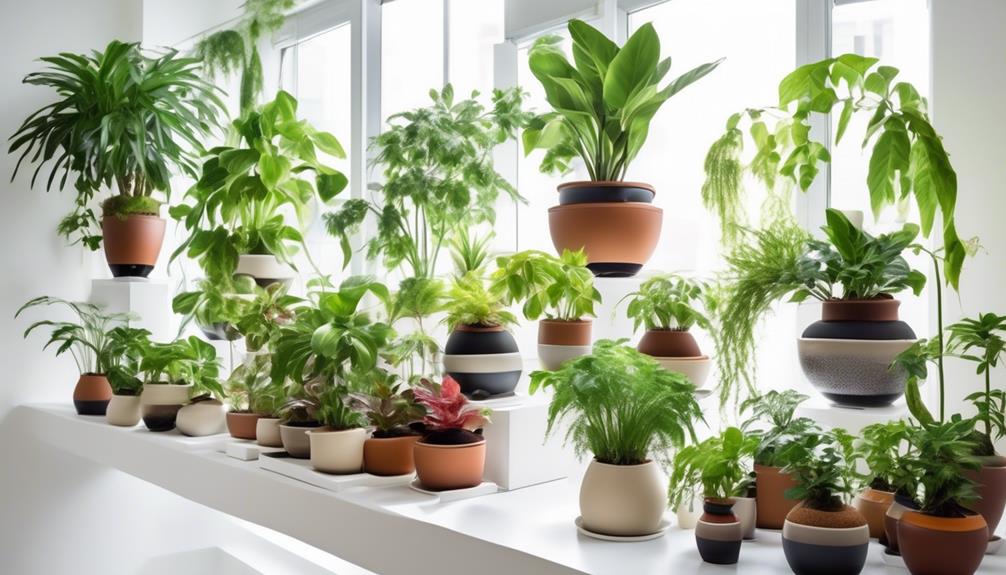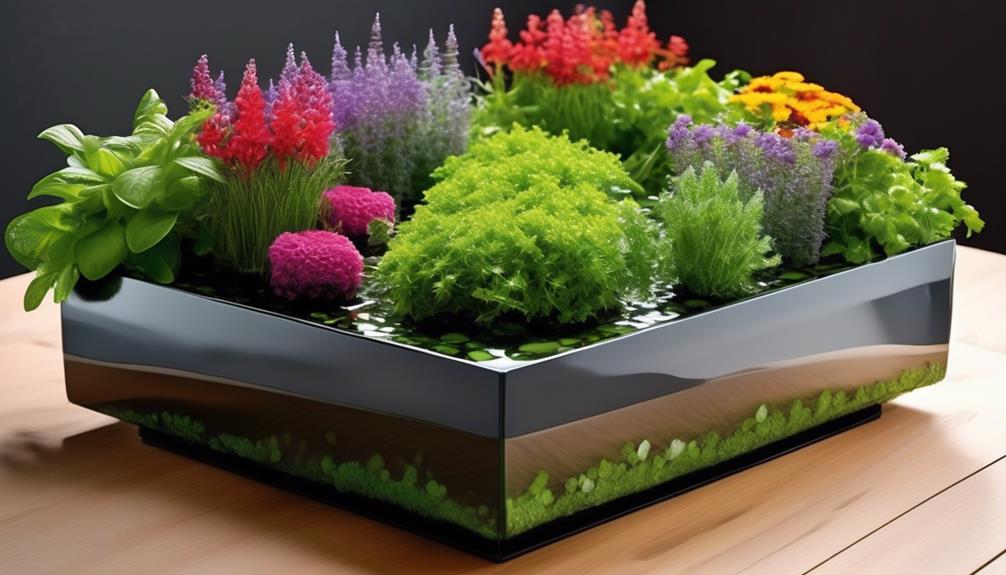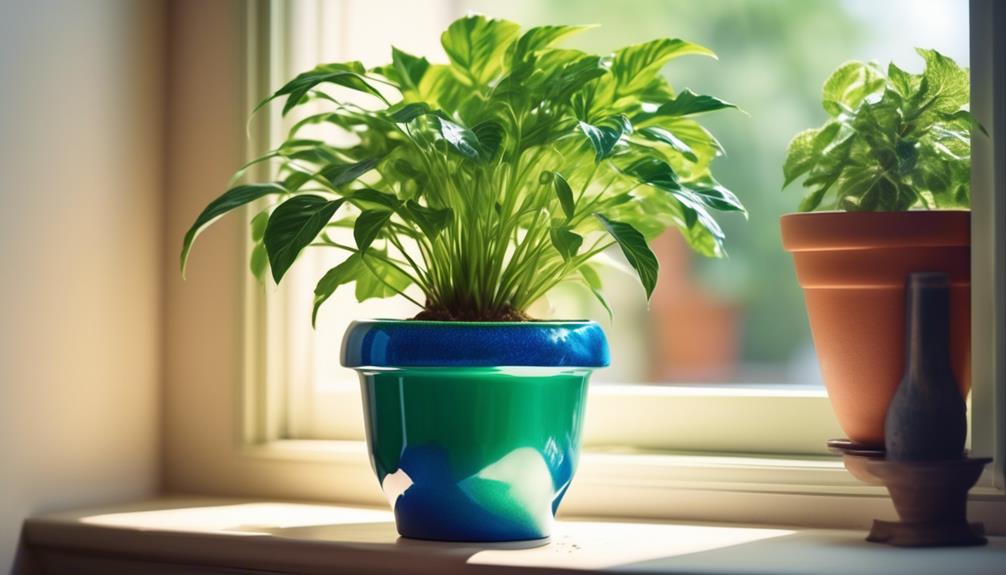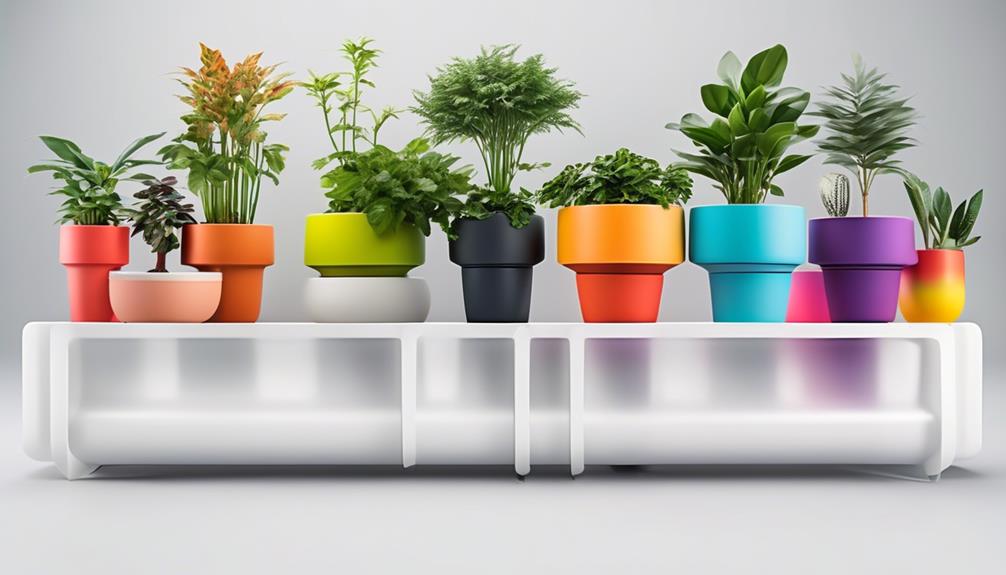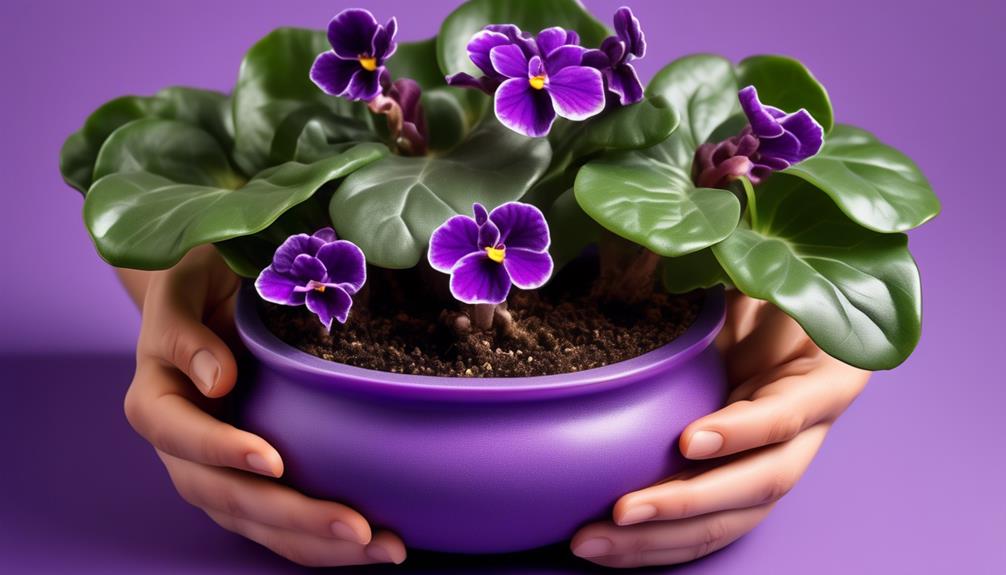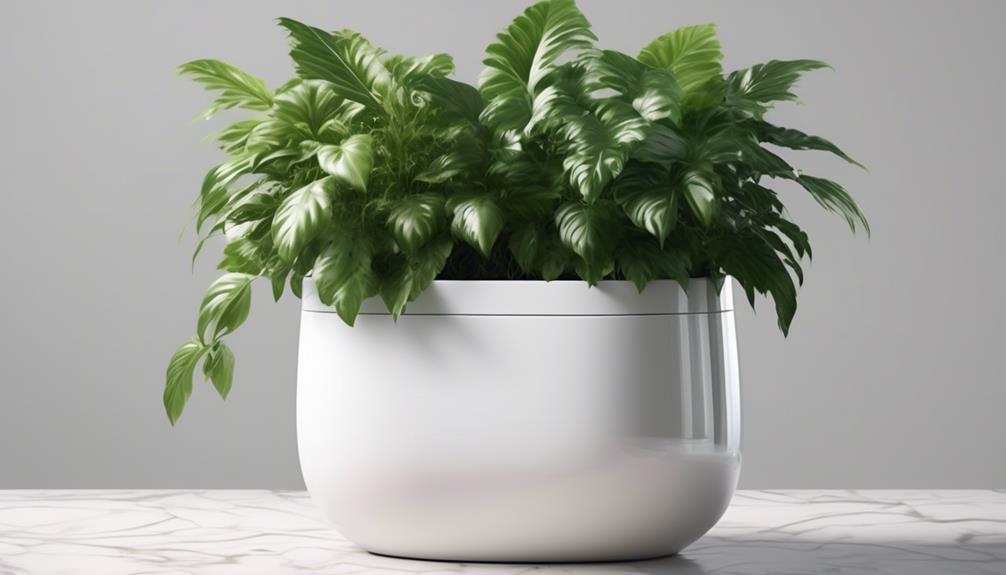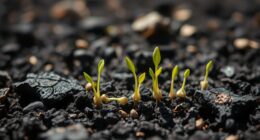We’ve all been there – trying our best to take care of our indoor plants, hoping they thrive, only to find them wilting from lack of water. Our busy schedules often get in the way of giving them the attention they need.
But did you know that self-watering pots might just be the solution to this common problem?
While they seem like a convenient fix, there's more to consider when it comes to using these pots for our beloved indoor greenery.
Let's explore the science behind self-watering pots and whether they truly live up to the hype.
Key Takeaways
- Self-watering pots provide consistent moisture levels, reducing the risk of over or under-watering.
- They improve water efficiency and lead to long-term cost savings due to reduced water usage.
- Self-watering pots contribute to environmental sustainability through water conservation.
- They require less frequent maintenance compared to traditional pots.
The Science Behind Self-Watering Pots
In self-watering pots, the science behind their functionality lies in the principle of capillary action, which allows water to move upward through a porous material, such as soil, to keep the plant roots consistently hydrated. This process is facilitated by the use of a wicking system, where a reservoir at the bottom of the pot holds water, and a wick, usually made of cotton or felt, draws the water up into the soil.
One of the significant benefits of self-watering pots is their ability to provide a consistent level of moisture to plants, reducing the likelihood of over or under-watering. This is particularly advantageous for individuals who may not have the time to water their plants regularly. Additionally, self-watering pots can help prevent water wastage by allowing plants to absorb only the amount of water they need.
However, a potential disadvantage of self-watering pots is the risk of root rot if the reservoir is overfilled, leading to waterlogging of the soil. Moreover, the initial cost of self-watering pots may be higher compared to traditional pots, but the long-term benefits often outweigh this initial investment.
Advantages of Using Self-Watering Pots
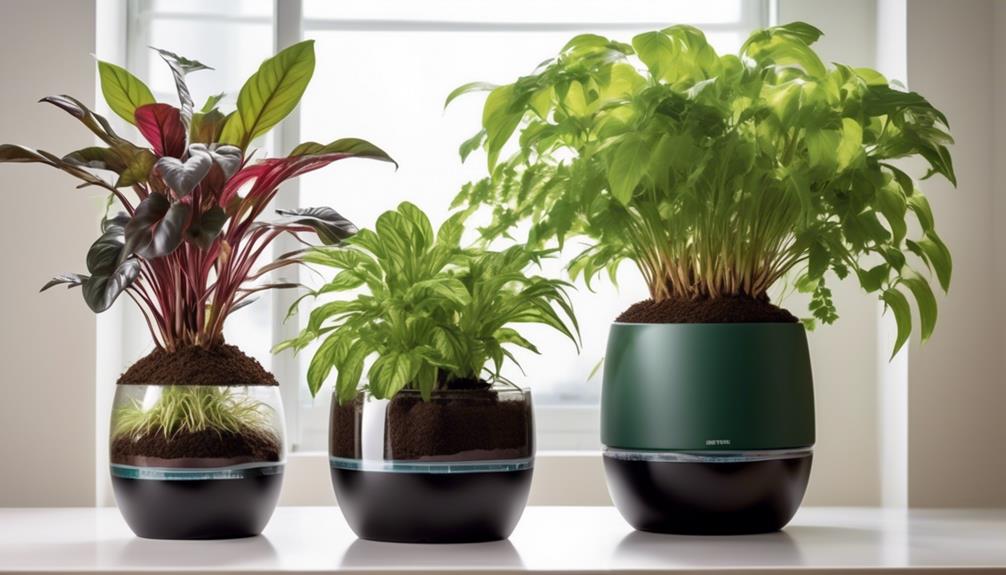
One significant advantage of utilizing self-watering pots for indoor plants is the consistent and efficient provision of moisture, ensuring optimal hydration levels for plant roots. These pots feature a reservoir that stores water, allowing the plant to draw moisture as needed, promoting healthy root development and overall plant growth. Additionally, self-watering pots offer water conservation benefits by reducing evaporation and runoff, contributing to sustainable and efficient water usage. Moreover, they provide convenience as they require less frequent watering, making them ideal for busy individuals or those with limited time for plant care. Furthermore, self-watering pots are cost-effective in the long run, as they minimize water wastage and reduce the frequency of purchasing traditional pots or watering systems. Overall, the use of self-watering pots supports plant health and growth, offers water conservation, and enhances convenience for plant care, making them a valuable option for indoor gardening.
| Advantages of Self-Watering Pots | ||
|---|---|---|
| Consistent moisture provision | Optimal hydration levels | Healthy root development |
| Water conservation | Reduced evaporation | Sustainable water usage |
| Convenience | Less frequent watering | Ideal for busy individuals |
| Cost effectiveness | Minimized water wastage | Reduced frequency of purchases |
Potential Drawbacks of Self-Watering Pots
Transitioning from discussing the advantages of self-watering pots for indoor plants, we now turn our attention to examining the potential drawbacks associated with their usage. While self-watering pots offer several benefits, it's essential to consider their potential drawbacks to make an informed decision.
- Root Rot Risk: Self-watering pots can lead to overwatering if not managed properly. The continuous presence of water in the reservoir can create excessive moisture around the plant's roots, leading to the development of root rot.
- Maintenance Requirements: Although self-watering pots reduce the frequency of watering, they still require regular maintenance. The reservoir needs to be cleaned to prevent the growth of algae and mold, and the watering system should be checked for any clogging or malfunction.
- Limited Soil Choice: Some self-watering pots may have limitations on the type of soil that can be used. Certain pot designs may work optimally with specific soil compositions, restricting the flexibility of plant care.
Understanding these potential drawbacks and the maintenance requirements associated with self-watering pots is crucial for effectively utilizing this innovative gardening solution.
Best Plants for Self-Watering Pots
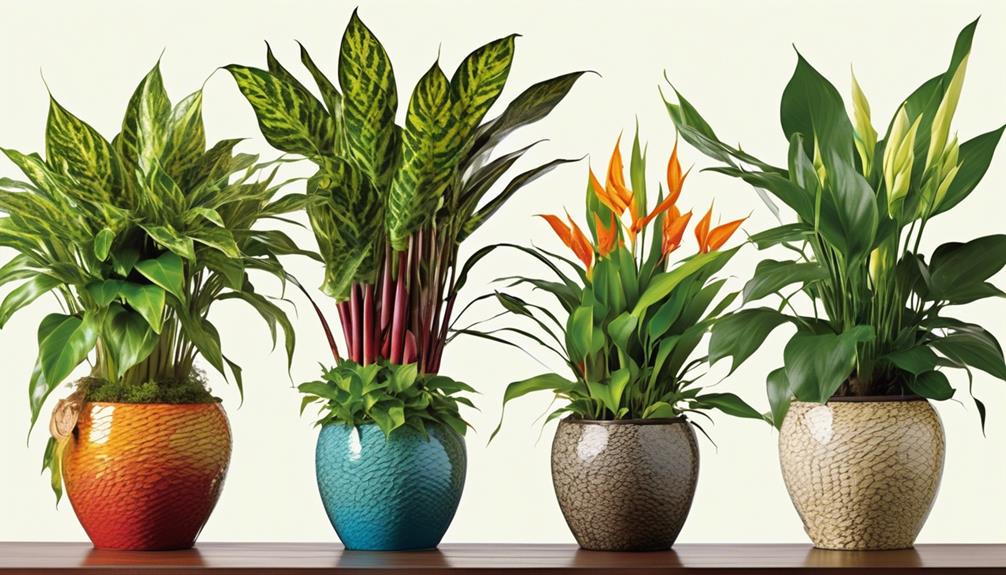
When selecting plants for self-watering pots, we must consider their water requirements and how they interact with the self-watering system.
Certain plants, such as peace lilies and spider plants, are well-suited for these pots due to their moderate water needs and ability to thrive in consistently moist soil.
Understanding the watering frequency guidance for different plant species is crucial for successful growth in self-watering pots.
The benefits of using these pots, such as reduced maintenance and healthier plants, further emphasize the importance of choosing the right plants for this innovative watering method.
Ideal Plant Choices
Many indoor plants thrive in self-watering pots, as they provide a consistent moisture level that's beneficial for a variety of species. When choosing plants for self-watering pots, consider those that prefer moderate moisture and thrive in humid conditions. Some ideal plant choices for self-watering pots include:
- Peace Lily (Spathiphyllum spp.): Known for its elegant white blooms, the peace lily thrives in consistently moist soil and high humidity levels.
- Spider Plant (Chlorophytum comosum): This resilient plant is well-suited for self-watering pots, as it prefers evenly moist soil and can tolerate a range of light conditions.
- Pothos (Epipremnum aureum): Pothos is an excellent choice for self-watering pots due to its adaptability to varying light levels and its preference for consistently moist soil.
These plants are well-suited for self-watering pots and can thrive in indoor environments with the right care and watering systems.
Watering Frequency Guidance
Based on our analysis of plant needs and self-watering pot systems, certain species, such as peace lilies and spider plants, require a consistent watering frequency to thrive in these specialized containers.
When using self-watering pots, it's crucial to establish a suitable watering schedule based on the specific plant's moisture needs. Overwatering risks can be mitigated by closely monitoring the moisture levels within the potting mix.
For instance, peace lilies prefer consistently moist soil but can suffer if overwatered, leading to root rot and compromised plant health. Spider plants, on the other hand, thrive with slightly drier conditions and can withstand occasional drying out between waterings.
Understanding the individual watering requirements of plants is vital for maintaining their health and optimizing their growth within self-watering pots.
Benefits of Self-Watering
Self-watering pots offer a practical solution for maintaining optimal moisture levels and promoting the growth of certain plant species, making them an ideal choice for indoor gardening enthusiasts.
The benefits of using self-watering pots include:
- Self watering pot maintenance: These pots reduce the frequency of watering, preventing overwatering or underwatering, which can be detrimental to plant health. The self-watering system also provides a consistent moisture level, reducing the need for constant monitoring.
- Enhanced plant growth: Self-watering pots promote healthy root development by providing a consistent water supply, leading to lusher and more vigorous growth of plants.
- Self watering pot aesthetics: These pots often have a sleek and modern design, enhancing the visual appeal of indoor spaces while efficiently caring for plants.
Tips for Using Self-Watering Pots Effectively
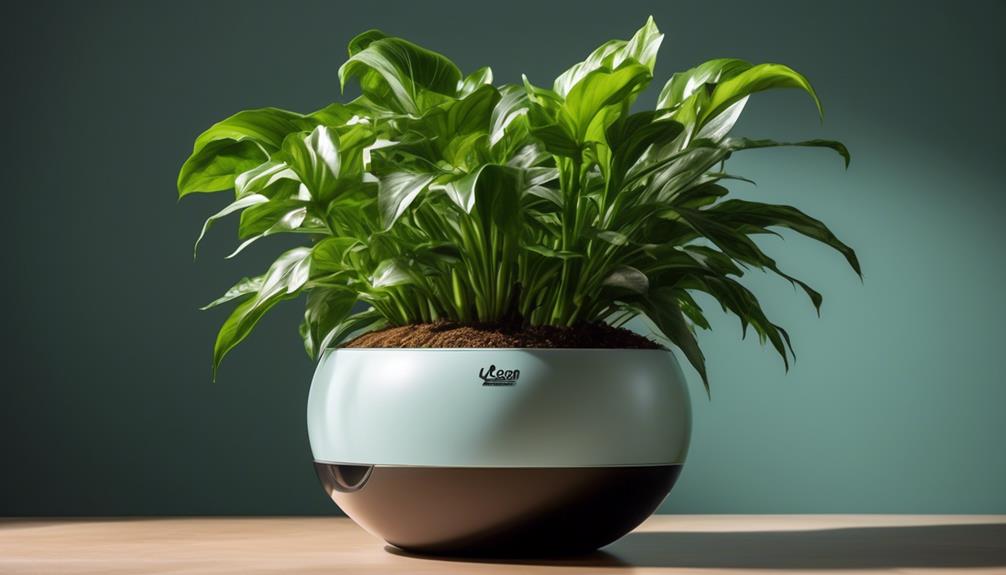
How can we maximize the effectiveness of self-watering pots for indoor plants?
To ensure optimal performance, it's essential to follow specific maintenance tips and troubleshooting techniques.
Firstly, regularly clean the reservoir and wick to prevent clogs and build-up, which can impede the self-watering system.
Additionally, monitor the water level indicator to avoid overfilling or allowing the reservoir to run dry, as both scenarios can harm the plant.
When planting, select a well-draining soil mix to prevent waterlogging, and ensure the soil is adequately compacted around the wick for proper water uptake.
Moreover, consider the plant's water needs and adjust the wick's positioning accordingly, ensuring it reaches the root zone.
Lastly, periodically check for any leaks or malfunctioning parts to address issues promptly and maintain the system's functionality.
Comparing Self-Watering Pots With Traditional Pots
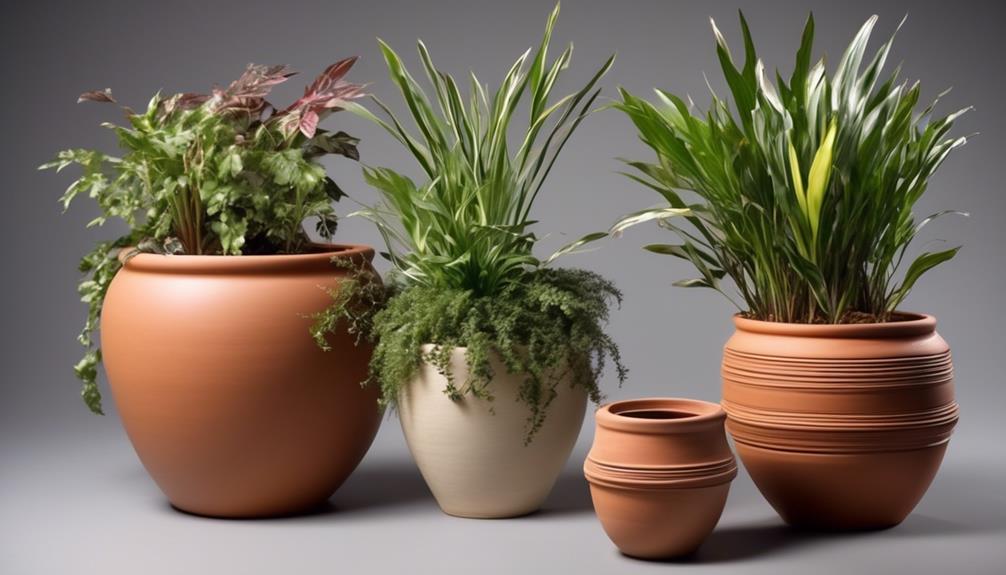
When comparing self-watering pots with traditional pots, it's important to consider factors such as water efficiency, root health, and overall plant growth.
- Watering Efficiency:
Self-watering pots are designed to provide a consistent level of moisture to the plant, reducing the risk of over or under-watering. Traditional pots require regular monitoring and manual watering, which can lead to fluctuations in soil moisture levels.
- Cost Comparison:
While self-watering pots may have a higher initial cost, their water efficiency can lead to long-term cost savings by reducing water usage and minimizing the need for specialized watering systems or services for traditional pots.
- Environmental Impact and Maintenance Requirements:
Self-watering pots can contribute to environmental sustainability by conserving water and reducing the risk of water wastage. Additionally, they often require less frequent maintenance compared to traditional pots, which need regular watering and monitoring to maintain optimal soil moisture levels.
How to Choose the Right Self-Watering Pot

When choosing the right self-watering pot, it's essential to consider the size and compatibility of the pot with the specific indoor plant. Different plants have varying water needs, so the pot's watering mechanism type, such as wick, reservoir, or drip system, should align with the plant's requirements.
Understanding the watering mechanism types will ensure the plant receives the appropriate amount of water, promoting healthy growth and vitality.
Size and Plant Compatibility
Selecting the appropriate size and type of self-watering pot for your indoor plants requires careful consideration of the plant's specific water and space requirements. To ensure compatibility, follow these guidelines:
- Plant Size: Choose a self-watering pot that accommodates the mature size of your plant. Larger plants need pots with more soil and water capacity, while smaller plants thrive in compact pots. Always consider the projected growth of the plant when selecting the pot size.
- Water Consumption: Assess the water needs of your plant. Some plants require more water, while others prefer drier conditions. Select a self-watering pot with adjustable water reservoirs or wicking systems to cater to the specific water consumption of your plant.
- Root Space: Ensure the pot provides sufficient space for the plant's roots to grow. An overcrowded pot can lead to root-bound plants, affecting their overall health and growth.
Considering these factors will help you choose the right self-watering pot, promoting healthy growth for your indoor plants.
Watering Mechanism Types
To effectively choose the right self-watering pot for your indoor plants, it's essential to understand the various types of watering mechanisms available and their suitability for different plant species and environmental conditions.
Traditional watering methods rely on the plant owner's judgment and can lead to over or underwatering. Self-watering pots utilize a water reservoir design to provide consistent moisture to plants. This reservoir allows for better control of soil moisture, ensuring optimal plant hydration.
Capillary action, wick systems, and water level indicators are common mechanisms used in self-watering pots to regulate water delivery based on the plant's needs. Understanding these mechanisms is crucial in selecting the most suitable self-watering pot for your indoor plants, promoting healthier growth and reducing the risks associated with inconsistent watering practices.
Frequently Asked Questions
Can Self-Watering Pots Be Used for Outdoor Plants as Well?
Yes, self-watering pots can be beneficial for outdoor gardening. They provide consistent moisture, reducing the frequency of watering. However, they may have limitations in areas with heavy rain, potentially leading to overwatering. Proper drainage is crucial to prevent waterlogging.
Alternatives like drip irrigation systems offer precise control. Understanding the specific needs of outdoor plants is essential when considering self-watering pots for outdoor gardening.
Are There Different Sizes of Self-Watering Pots Available for Different Plant Types?
Are there different sizes of self-watering pots available for different plant types?
When it comes to indoor gardening, proper watering is essential. Self-watering pots are designed to provide a consistent water supply, promoting healthy plant growth.
Various sizes cater to different plant types, ensuring optimal moisture levels. Understanding the specific needs of your plants and selecting the appropriate self-watering pot size is crucial for successful container gardening and plant care.
Can Self-Watering Pots Be Used for Plants That Require a Lot of Sunlight?
Using self-watering pots for plants that require a lot of sunlight presents challenges. Plant growth and watering frequency are crucial factors. These pots can be beneficial, as they provide consistent moisture, but the soil may dry out faster due to increased sunlight.
Adjusting the watering frequency and using a larger self-watering pot can help maintain optimal soil moisture levels for plants that require a lot of sunlight.
How Often Do Self-Watering Pots Need to Be Refilled With Water?
We refill self-watering pots based on the plant's needs and environmental conditions. The frequency of refilling depends on factors like plant type, pot size, and humidity levels.
Self-watering pots offer benefits such as consistent moisture levels, reducing the risk of over or under-watering. Understanding the plant's water requirements and monitoring the pot's water level helps to determine the optimal frequency for refilling.
Are Self-Watering Pots Safe to Use for Edible Plants Like Herbs and Vegetables?
Self-watering pots allow for consistent watering, promoting healthier plant growth. They regulate watering frequency, ensuring optimal soil moisture for nutrient absorption.
For edible plants, like herbs and vegetables, this can be beneficial, as it supports their overall health and development. By maintaining a steady supply of water, self-watering pots provide a stable environment for these plants, aiding in their ability to thrive and produce quality produce.
Are self-watering pots beneficial for all types of indoor plants?
Yes, indoor self-watering plant pots are beneficial for all types of indoor plants. They regulate moisture levels, preventing over or under-watering. This innovation is especially useful for busy individuals or those new to plant care. It ensures that your indoor plants receive the right amount of water consistently.
Conclusion
In conclusion, self-watering pots are an excellent choice for indoor plants due to their efficient water delivery system and ability to reduce the risk of over or under-watering. The convenience and benefits they offer make them a valuable tool for plant care.
However, it's important to carefully consider the specific needs of your plants and choose the right self-watering pot to ensure optimal growth and health. Remember, the key to successful plant care lies in finding the perfect balance.

